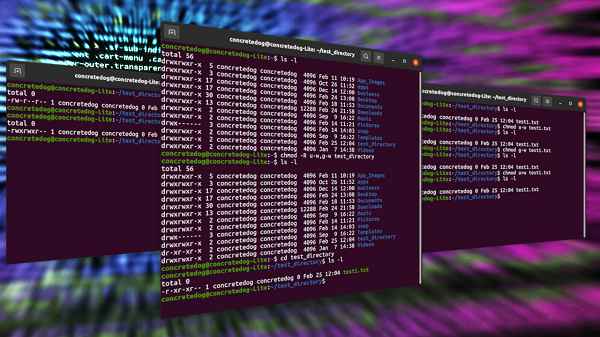In the dynamic realm of Linux, mastering the art of user switching in the terminal is a skill every enthusiast should possess. This guide will walk you through the intricacies of seamlessly transitioning between users in the Linux Terminal. Whether you’re a seasoned user or a novice, these step-by-step instructions will empower you to navigate the Linux landscape effortlessly.
Understanding User Switching

What is User Switching?
Before delving into the nitty-gritty, let’s grasp the essence of user switching. In Linux, multiple users can be logged into a system simultaneously, each with distinct privileges and settings. Switching users allows seamless transitions between different user accounts without the need to log out and log back in.
Why Switch Users?
User switching is a pivotal feature for system administrators, developers, and anyone managing a Linux-based system. It facilitates multitasking, enhances security, and streamlines administrative tasks, offering a more efficient workflow.
The Command Line Magic
Command Basics: su and sudo
The foundation of user switching lies in two fundamental commands: su (substitute user) and sudo (superuser do). Mastering these commands is crucial for efficient user transitions.
How to Switch Users in Linux Terminal using su
The su command allows you to switch to another user account. For instance, to switch to the user ‘john,’ simply type:
bash
su john
You’ll be prompted to enter the user’s password. Once authenticated, you seamlessly switch to the ‘john’ account.
Elevating Privileges with sudo
While su switches the entire user, sudo empowers you to execute specific commands with elevated privileges. For example:
bash
sudo apt-get update
This command updates your system, and the ‘sudo’ ensures it runs with superuser privileges.
Advanced User Switching Techniques
Switching to a Specific Shell
Sometimes, you may want to switch users and land in a specific shell. Achieve this by using the -s flag with su:
bash
su -s /bin/bash john
This command switches to the user ‘john’ and opens a bash shell.
Remote User Switching with ssh
For remote systems, the ssh command is your gateway to user switching. Connect to another user on a remote machine with:
bash
ssh john@remote-machine
Enter the password, and you’re now operating as ‘john’ on the remote system.
Managing User Sessions
Checking Active Users
Keeping tabs on active users is crucial for system administrators. Utilize the who command to display a list of currently logged-in users:
bash
who
This command provides information about logged-in users, their terminals, and login times.
Forcibly Logging Out Users
In scenarios where you need to log out a user forcefully, the pkill command comes to the rescue. For instance, to log out the user ‘jane,’ use:
bash
sudo pkill -u jane
This command terminates all processes associated with ‘jane,’ logging them out instantly.
Troubleshooting User Switching Issues

Permission Denied: Debugging
Encountering a “Permission Denied” message? Ensure that the target user account has the correct permissions. Verify the user’s existence and password using the passwd command:
bash
sudo passwd john
Follow the prompts to set or update the password.
Insufficient Privileges: sudo Woes
If sudo isn’t working as expected, check the sudoers file with:
bash
sudo visudo
Ensure your user has the necessary permissions listed in this file.
Best Practices for Efficient User Switching
Lockdown Your Terminal
Prevent unauthorized access to your terminal by locking it when switching users. Use the vlock command for an extra layer of security:
bash
vlock
This command locks the terminal, requiring a password to unlock.
Streamlining User Switching with Aliases
Simplify user switching with aliases in your shell configuration file (e.g., .bashrc). For instance:
bash
alias switchuser=’su’
Now, typing switchuser john accomplishes the same as su john.
Conclusion
Mastering the art of user switching in the Linux Terminal elevates your proficiency and efficiency in managing diverse tasks. From basic commands like su and sudo to advanced techniques like remote user switching, this guide has equipped you with the knowledge to navigate the Linux landscape seamlessly. Implement these strategies, troubleshoot effectively, and embrace a more agile and secure Linux experience. Happy terminal maneuvering!
Read also:



